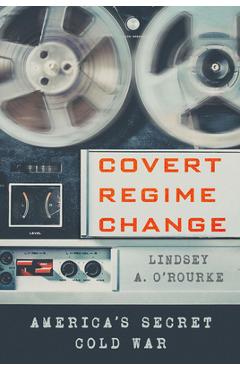Covert Regime Change: America\'s Secret Cold War - Lindsey A. O\'rourke

Detalii Covert Regime Change: America\'s Secret
libris.ro
175.88 Lei
195.42 Lei
Political Science
Lindsey A. Orourke
Covert Regime Change: America\'s Secret - Disponibil la libris.ro
Pe YEO găsești Covert Regime Change: America\'s Secret de la Lindsey A. Orourke, în categoria Political Science.
Indiferent de nevoile tale, Covert Regime Change: America\'s Secret Cold War - Lindsey A. O\'rourke din categoria Political Science îți poate aduce un echilibru perfect între calitate și preț, cu avantaje practice și moderne.
Preț: 175.88 Lei
Caracteristicile produsului Covert Regime Change: America\'s Secret
- Brand: Lindsey A. Orourke
- Categoria: Political Science
- Magazin: libris.ro
- Ultima actualizare: 28-10-2025 01:22:05
Comandă Covert Regime Change: America\'s Secret Online, Simplu și Rapid
Prin intermediul platformei YEO, poți comanda Covert Regime Change: America\'s Secret de la libris.ro rapid și în siguranță. Bucură-te de o experiență de cumpărături online optimizată și descoperă cele mai bune oferte actualizate constant.
Descriere magazin:
States seldom resort to war to overthrow their adversaries. They are more likely to attempt to covertly change the opposing regime, by assassinating a foreign leader, sponsoring a coup d\'état, meddling in a democratic election, or secretly aiding foreign dissident groups. In Covert Regime Change , Lindsey A. O\'Rourke shows us how states really act when trying to overthrow another state. She argues that conventional focus on overt cases misses the basic causes of regime change. O\'Rourke provides substantive evidence of types of security interests that drive states to intervene. Offensive operations aim to overthrow a current military rival or break up a rival alliance. Preventive operations seek to stop a state from taking certain actions, such as joining a rival alliance, that may make them a future security threat. Hegemonic operations try to maintain a hierarchical relationship between the intervening state and the target government. Despite the prevalence of covert attempts at regime change, most operations fail to remain covert and spark blowback in unanticipated ways. Covert Regime Change assembles an original dataset of all American regime change operations during the Cold War. This fund of information shows the United States was ten times more likely to try covert rather than overt regime change during the Cold War. Her dataset allows O\'Rourke to address three foundational questions: What motivates states to attempt foreign regime change? Why do states prefer to conduct these operations covertly rather than overtly? How successful are such missions in achieving their foreign policy goals?

Produse asemănătoare

Covert Regime Change: America\'s Secret Cold War - Lindsey A. O\'rourke
![]() libris.ro
libris.ro
Actualizat in 28/10/2025
175.88 Lei
Produse marca Lindsey A. Orourke

Covert Regime Change: America\'s Secret Cold War - Lindsey A. O\'rourke
![]() libris.ro
libris.ro
Actualizat in 28/10/2025
175.88 Lei